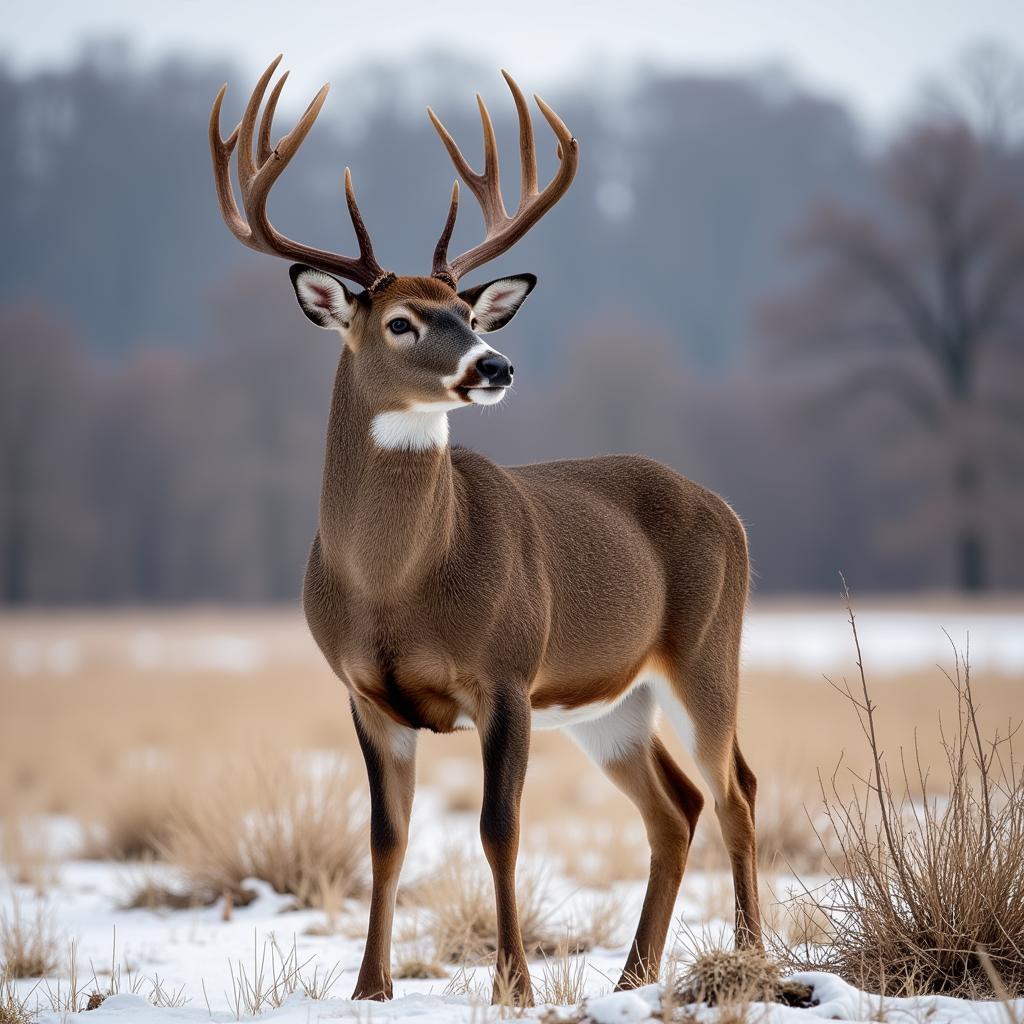Late Season Food Plots are the unsung heroes of successful wildlife management and hunting strategies. While early season plots are crucial for attracting and establishing healthy populations, it’s the late season food sources that truly make a difference during those crucial fall and winter months. This is when deer and other wildlife need a nutritional boost to survive the cold and prepare for the breeding season.
Why Late Season Food Plots Matter
As the days grow shorter and temperatures drop, natural food sources become scarce. This is especially true in areas with harsh winters. Late season food plots provide a lifeline for wildlife, offering a consistent source of highly palatable and nutritious forage. This is crucial for maintaining their body weight, boosting their energy reserves, and ensuring reproductive success.
More than just survival, late season food plots offer hunters a significant advantage. By strategically planting and maintaining these plots, you can effectively attract and pattern deer, increasing your chances of a successful and ethical hunt.
Choosing the Right Plants for Late Season Success
Selecting the right plants is paramount for a thriving late season food plot. The ideal crops are those that can withstand frost and offer high nutritional value well into the winter months. Here are a few top contenders:
- Winter Rye: This fast-growing grain is a favorite among wildlife managers for its cold hardiness and high protein content. It establishes quickly and provides excellent forage throughout the late season.
- Brassicas: This family of plants, including turnips, radishes, and kale, are known for their cold tolerance and ability to provide essential vitamins and minerals. Their leafy greens and large, nutritious roots are a valuable food source when other options are limited.
- Clover: While often considered a spring and summer forage, certain varieties of clover, like crimson clover, can provide late season benefits. They fix nitrogen in the soil, improving overall plot health, and offer some late-season grazing.
- Austrian Winter Peas: These peas are another excellent option for a high-protein food source. They grow well in cooler temperatures and can be planted in late summer for fall and winter foraging.
Planting and Maintaining Your Late Season Food Plot
Timing is key when it comes to planting a successful late season food plot. You’ll want to ensure your chosen plants have enough time to establish before the first frost arrives. It’s essential to:
- Prepare the Soil: Just like any garden, a successful food plot starts with proper soil preparation. Test your soil pH and amend it as needed. Clear any existing vegetation and till the soil to create a fine seedbed.
- Choose the Right Planting Time: Consult with your local agricultural extension office for the optimal planting window in your region. In general, late summer or early fall is ideal for most late season crops.
- Plant at the Correct Depth: Follow the recommended planting depth for your chosen seeds. This ensures proper germination and establishment.
- Fertilize Appropriately: Providing adequate nutrients is crucial for healthy plant growth. Fertilize your plot based on your soil test results and the specific needs of your chosen plants.
- Control Weeds: Weeds can quickly choke out your food plot, competing for vital nutrients and sunlight. Implement a weed control strategy through cultivation, herbicides, or a combination of both.
Extending the Life of Your Late Season Food Plot
With a little planning, you can maximize the lifespan of your late season food plot, ensuring a consistent food source for wildlife throughout the harshest months.
- Stagger Planting Times: By planting different crops with varying maturity dates, you can create a food source that lasts longer. Plant some crops a few weeks apart to stagger their availability.
- Consider a No-Till Approach: No-till farming practices minimize soil disturbance, preserving beneficial soil structure and microorganisms. This can lead to healthier plants with deeper root systems, making them more resilient during the winter.
- Utilize Cover Crops: Cover crops, like cereal rye, can be planted alongside your main crops. They help suppress weeds, prevent erosion, and add organic matter to the soil.
The Rewards of Late Season Food Plots
Investing in late season food plots yields benefits that extend far beyond a successful hunting season. It’s an investment in the overall health and well-being of your local wildlife population. By providing critical nutrition during times of scarcity, you contribute to their long-term survival and ensure thriving ecosystems for generations to come.
360 training texas food manager exam answers can help you better understand food safety and management, crucial for handling food for yourself and your family, especially when dealing with wild game.
 A healthy buck standing in a winter food plot
A healthy buck standing in a winter food plot
In conclusion, late season food plots are a testament to the powerful connection between responsible land management and wildlife conservation. By embracing these practices, we can ensure that both hunters and the wildlife they pursue continue to thrive.
Need help passing your Texas food handlers exam? Check out these food handlers test questions answers pdf texas for a comprehensive guide.